iPhone: Orion Nebula;
D7200: Zodiacal Light, Comet Catalina
Posted: 4 February 2016
|
Open: Wednesday, 3 February 2016, 1811 MST Temperature: 49°F |
Session: 915 Conditions: Clear |
Added the f/6.3 focal reducer in preparation for imaging Comet C/2013 US10 (Catalina) later in this session. 1818 MST: viewed M42 (Orion Nebula), 53X. No nebulosity was visible yet as the sky was still too bright. However, the Trapezium stars were nicely visible. 1830 MST: switched to 48X with the SteadyPix iPhone afocal adapter. Nebulosity just beginning to appear. 1837 MST: took this iPhone 6s Plus afocal 48X image of M42 using the iOS Camera app:
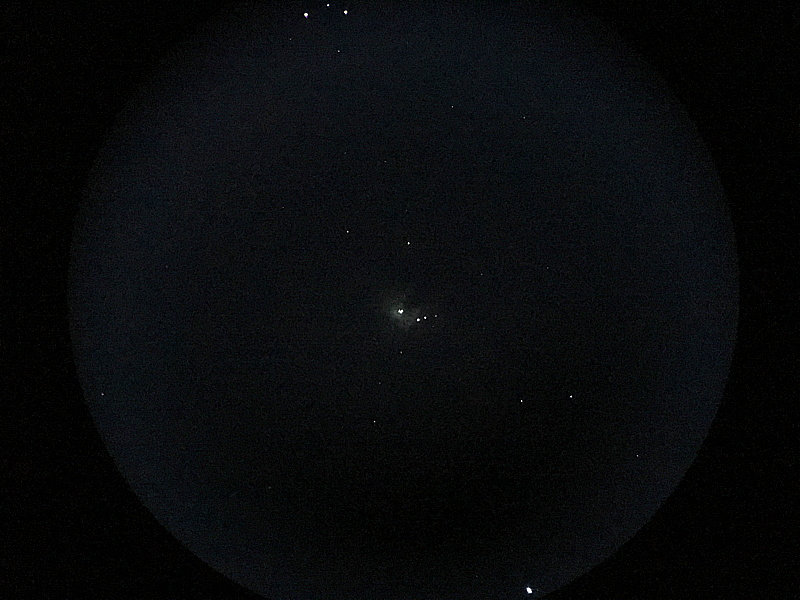
Some nebulosity is faintly visible near the Trapezium at the center of the above photo.
1911 MST: this iPhone afocal 48X image was taken with NightCap Pro (Long Exposure, Light Boost, ISO 8000, 1/3sec, 60 seconds):
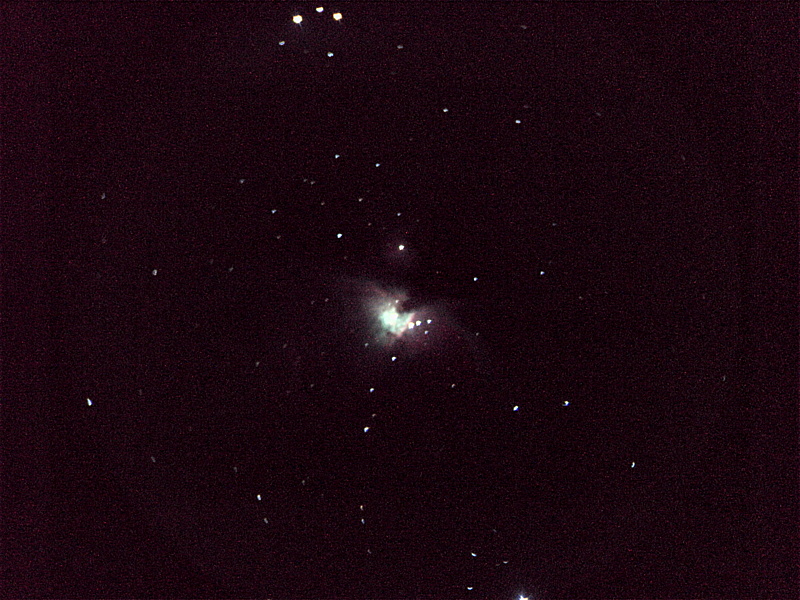
I then set up for sky imaging with the D7200 DSLR and 8mm fisheye lens. Mounted the camera on a photographic tripod outside of the observatory. This photo was taken at 1947 MST, f/5, 60 seconds (no tracking), ISO 5000:
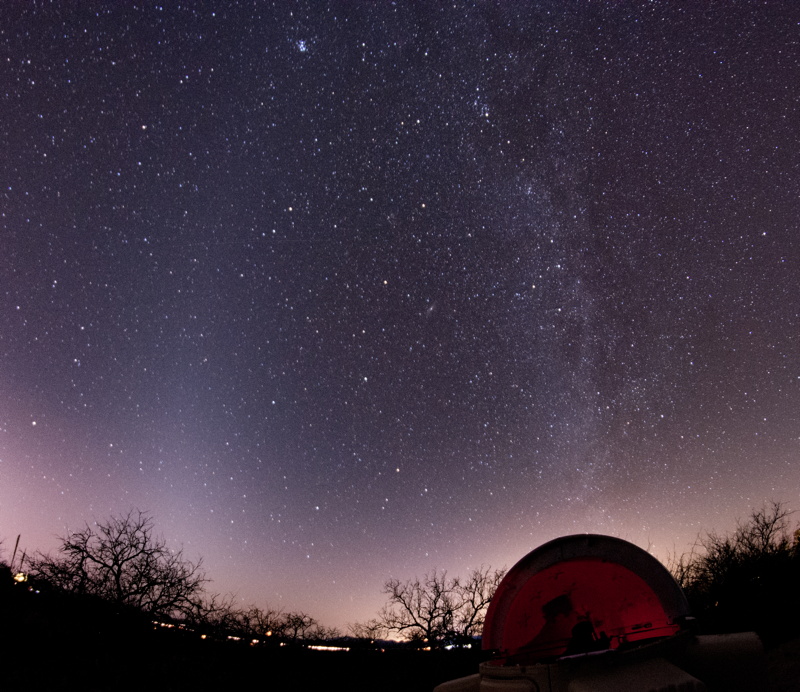
Mouseover or tap on image for labels
M45 (the Pleiades), M31 (Andromeda Galaxy), the Zodiacal Light, and the Milky Way are all visible in the image (rollover the image above to see labels). Click the thumbnail below for a larger (unlabeled) version:
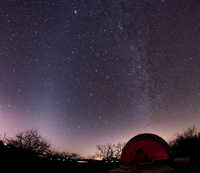
Click or tap on image for larger version
1952 MST: finished sky imaging. With the temperature down to 36°F I decided to take a "warmup break". 2012 MST: returned to the observatory and began setting up to image Comet C/2013 US10 (Catalina). Some breezes were now occurring.
Mounted the D7200 DSLR at prime focus + focal reducer. Did a focus test with the Bahtinov Mask using the star Pollux. Then powered on the GC Wi-Fi Adapter and used SkySafari 5 Pro to GOTO Comet Catalina. I did five 60 second (unguided), ISO 12800, exposures every 2 minutes. This single black-and-white image shows the tails from the comet:
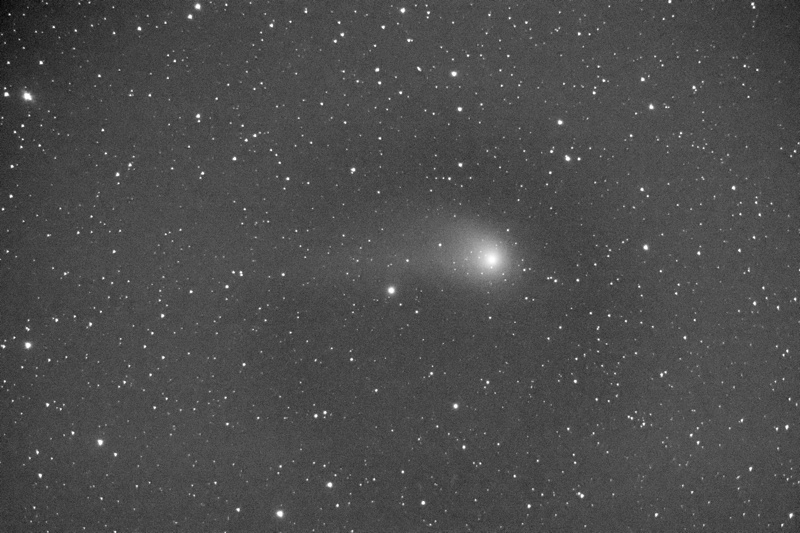
This next image shows the comet in color. Click (or tap) on the image to see the comet motion over 10 minutes.
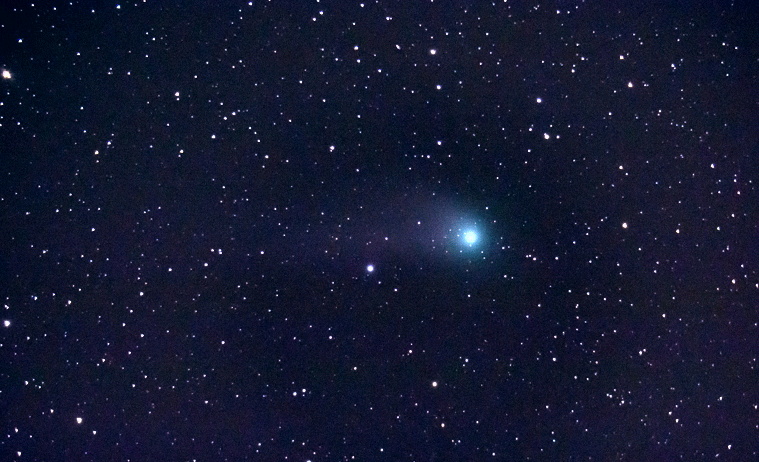
Click or tap on image for animation
2035 MST: ended comet imaging. Viewed the comet, 53X; no tail was visible but the coma was very nice. Then began closing up.
|
Close: Wednesday, 3 February 2016, 2055 MST Temperature: 36°F |
Session Length: 2h 44m Conditions: Clear, breezy |
Comments are welcome using Email. If you are on Twitter you can use the button below to tweet this report to your followers. Thanks.
Cassiopeia Observatory Home Page
Copyright ©2016 Michael L. Weasner / mweasner@me.com
URL = http://www.weasner.com/co/Reports/2016/02/04/index.html
